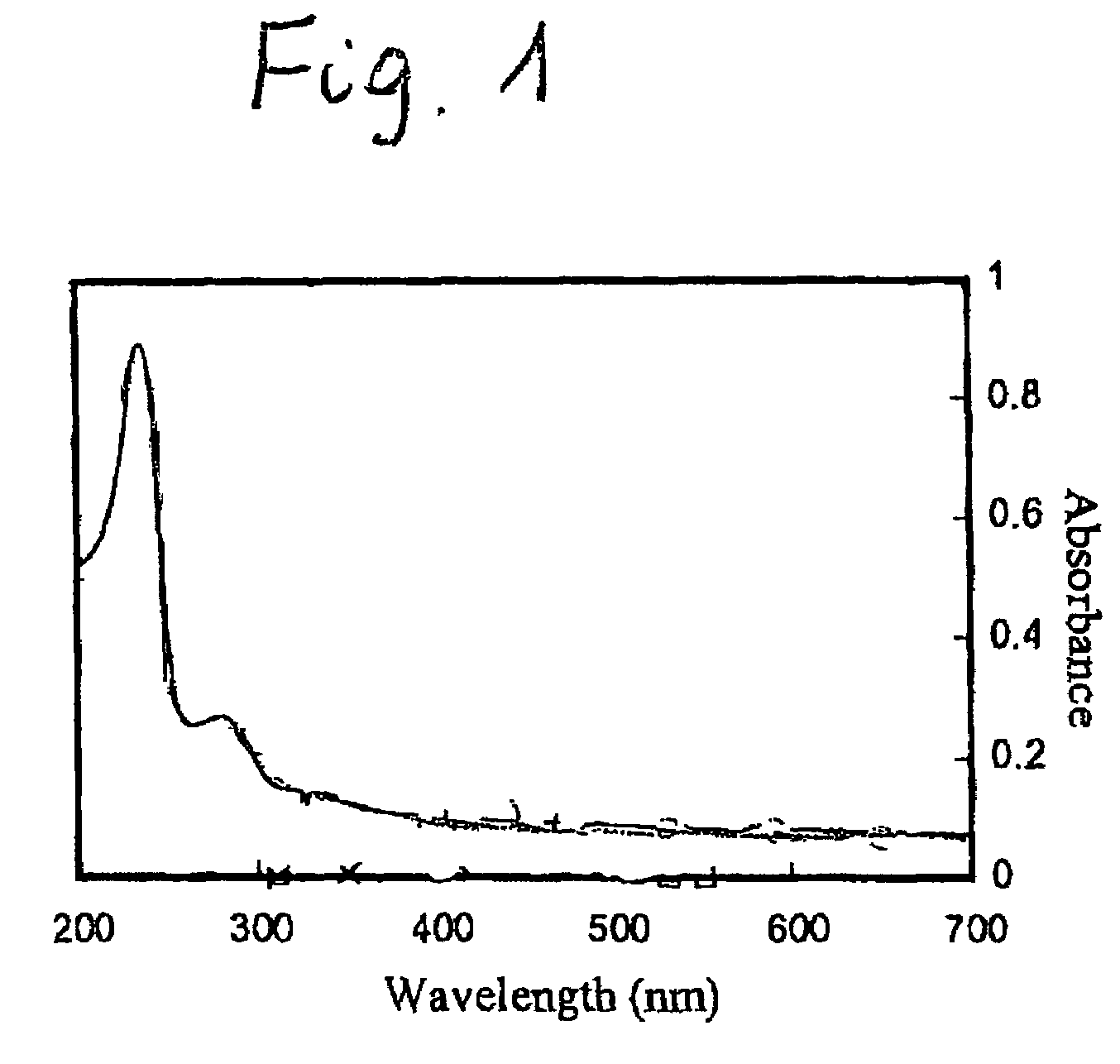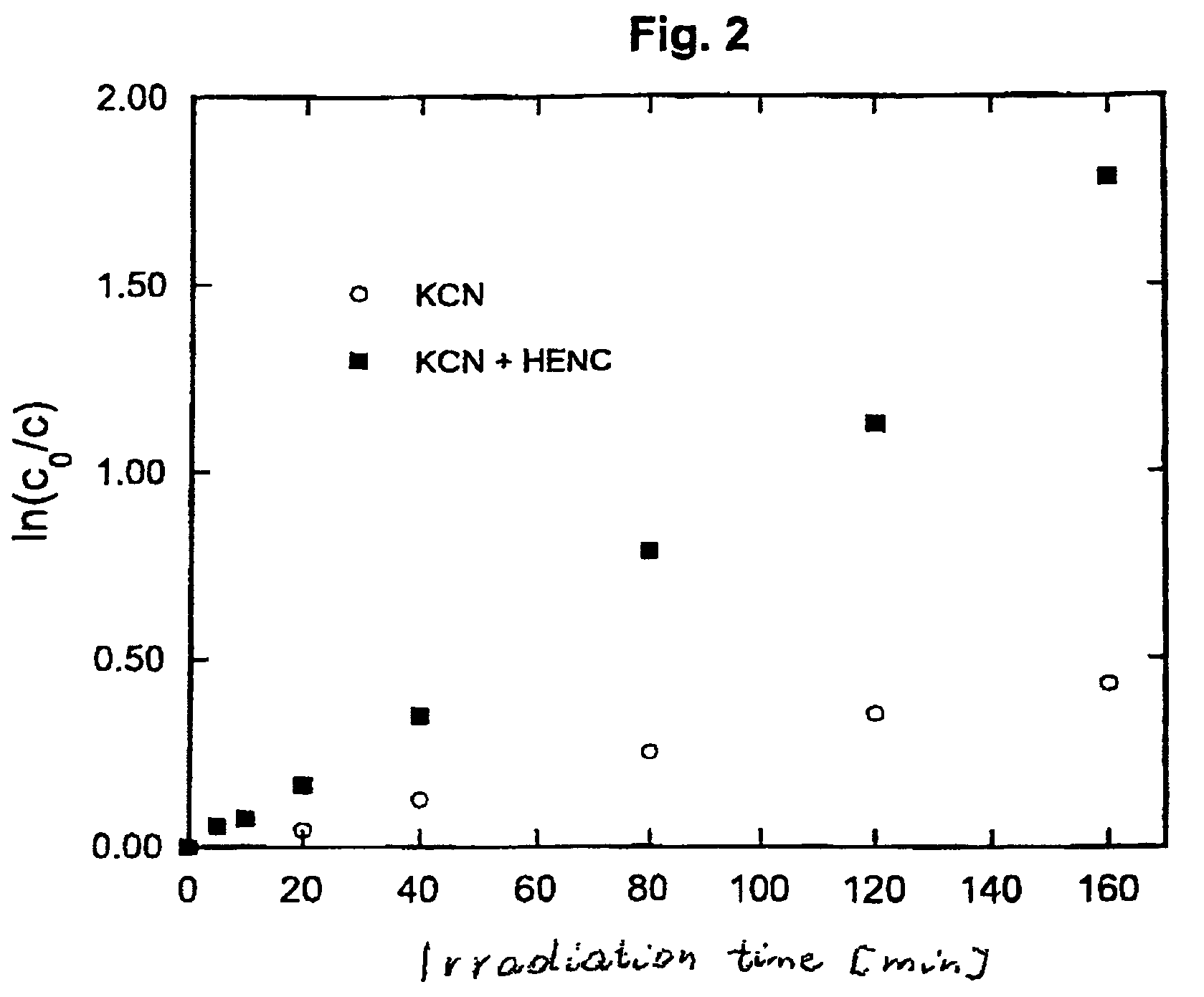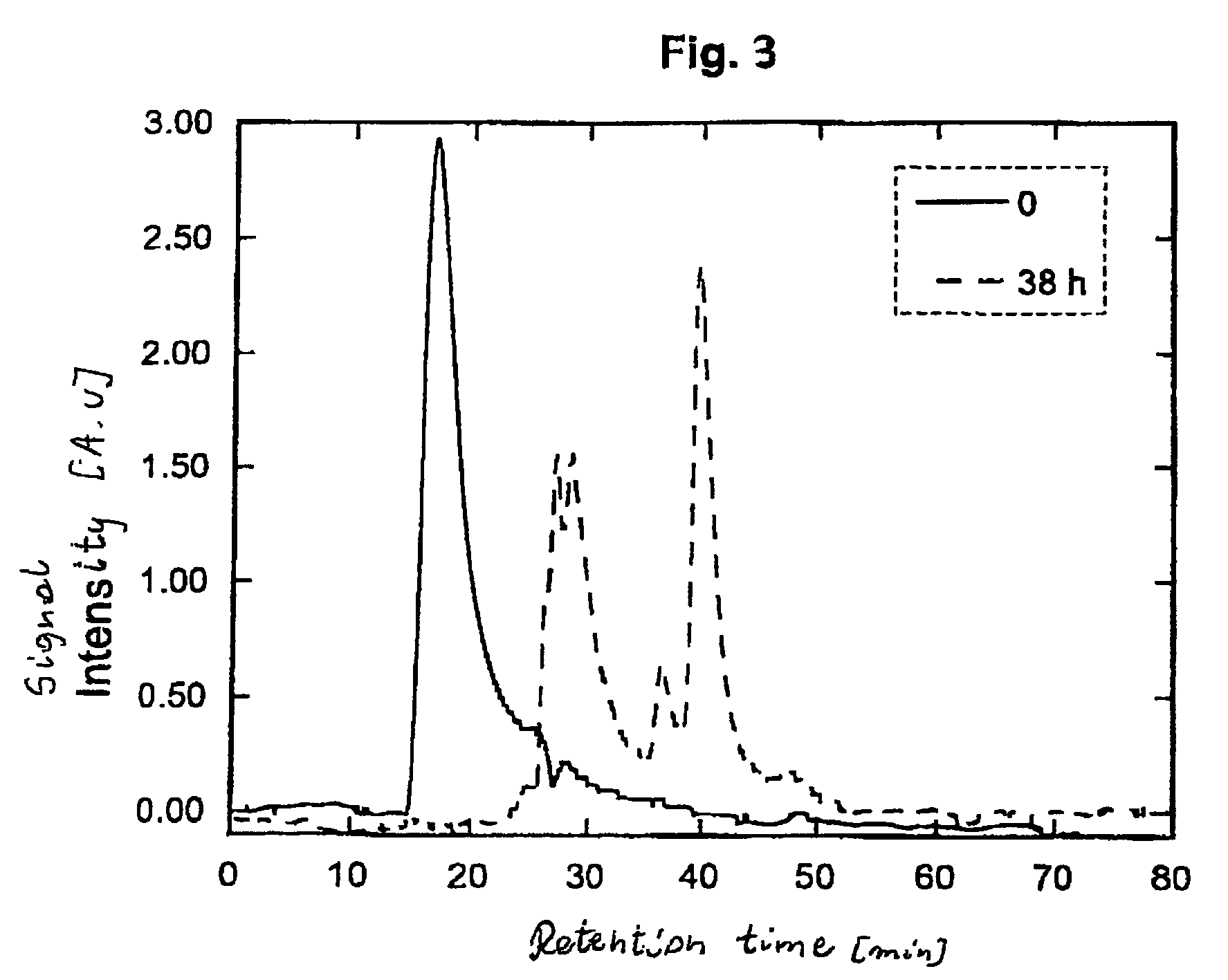Water soluble biodegradable polymeric photocatalysts
a biodegradable, polymer technology, applied in the field of photocatalysts, can solve the problems of environmental damage, possible degradation products, and residues of some of them, and achieve the effect of reducing the risk of environmental damag
- Summary
- Abstract
- Description
- Claims
- Application Information
AI Technical Summary
Benefits of technology
Problems solved by technology
Method used
Image
Examples
example 1
Photoactive Modified Hydroxyethylcellulose
[0025]Hydroxytheyl cellulose (HEC) is a well-known water-soluble derivative of natural cellulose. A sample of HEC with molecular weight of 155 000 g / mol was purchased from Polysciences, Inc. It was modified by reacting with 2-naphthoyl chloride in dry pyridine. The synthesized product, the naphthyl substituted hydroxytheylcellulose (HENC) is soluble in water. It shows surfactant-like properties, e.g. in the aqueous solution it forms a foam. The electronic absorption spectrum of HENC in aqueous solution (FIG. 1) displays the bands characteristic for the naphthyl (Np) chronophores (λmax=282 nm and a shoulder around 320 nm). The substitution of the cellulose hydroxyl groups was confirmed by IR and 1H NMR spectrospecies. Based on the UV-Vis spectra the degree of substitution (DS) was found to be 2.6 and the number of naphthyl groups per chain is approximately 50. The weight average molecular weight, MW, of HENC (158,000 g / mol) has been determine...
example 2
Solubilization of Large Molecules of Hydrophobic Organic Compounds
[0027]In order to carry out chemical reactions of hydrophopic organic molecules in water, it is important that the molecule be absorbed by the catalyst, leading to solubilization.
[0028]The solubilization was studied using perylene as a molecular probe and measurement of its fluorescence as a method. Such a methodology ensured the highest precision as perylene is very sparingly soluble in water and shows very efficient characteristic fluorescence while solubilized in hydrophobic polymeric microdomains. Perylene (microliter quantities of the solution of the concentration 1×10−3 M in acetone) was solubilized in aqueous solution of HENC of the concentration in the range 1×10−3-1×10−1 g / L. The solutions were left to equilibrate and the fluorescence spectrum of perylene (λexcc=415 nm) was measured. It was found that aqueous solution of HENC solubilizes perylene very efficiently. An experiment carried out with anthracene dem...
example 3
Photocatalytic Oxidation of Cyanides
[0029]An aqueous solution of HENC (0.8 g / L, pH=8.5) and potassium cyanide (conc.=5×10−5 M / L) was irradiated in an air atmosphere in a Rayonet photochemical reactor (model RPR-100) equipped with 16 lamps giving light with maximum at 300 nm. The oxidation of KCN was monitored using the analytical technique described in literature (Nagashima S. Ozawa T., Intern. J. Environm., Anal. Chem, 10 (1981)99). After 90 min. of irradiation half of KCN present in solution was oxidized. The process was found to be initiated by photoinduced electron transfer and could be described by a pseudo-first order kinetic equation (FIG. 2).
PUM
| Property | Measurement | Unit |
|---|---|---|
| biodegradable water soluble | aaaaa | aaaaa |
| mole % | aaaaa | aaaaa |
| hydrophobic | aaaaa | aaaaa |
Abstract
Description
Claims
Application Information
 Login to View More
Login to View More - R&D
- Intellectual Property
- Life Sciences
- Materials
- Tech Scout
- Unparalleled Data Quality
- Higher Quality Content
- 60% Fewer Hallucinations
Browse by: Latest US Patents, China's latest patents, Technical Efficacy Thesaurus, Application Domain, Technology Topic, Popular Technical Reports.
© 2025 PatSnap. All rights reserved.Legal|Privacy policy|Modern Slavery Act Transparency Statement|Sitemap|About US| Contact US: help@patsnap.com



